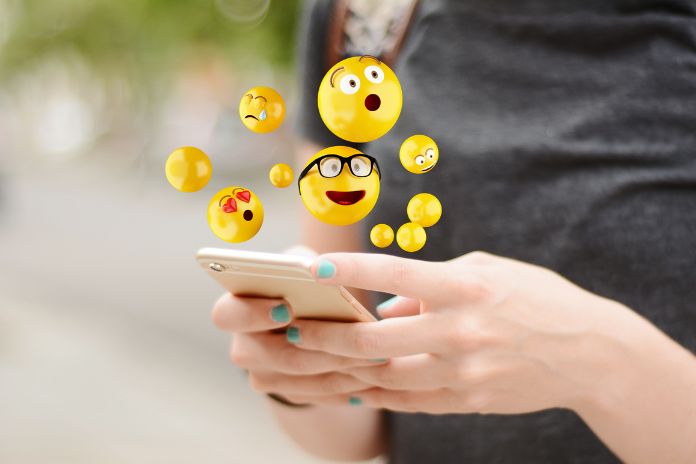In today’s fast-paced digital world, communication has evolved beyond just words. Emojis, those tiny expressive icons, have become an integral part of our online conversations. They add color, emotion, and depth to the words we type, helping to bridge the gap that written communication often creates.
In this article, we’ll explore how emojis have significantly shaped how we interpret messages, transforming our online interactions into a more nuanced and engaging experience.
The Rise of Emojis: From Punctuation to Expression
Remember when colons and parentheses were simple punctuation marks? These symbols, often used to convey a smiling or frowning expression, have now evolved into a wide array of emojis that cater to almost every emotion. From joy and laughter to sadness and anger, emojis have provided a visual representation of feelings that words alone sometimes struggle to convey.
Exploring the Impact and Evolution of Emojis
Conducting a comprehensive cross-cultural survey across France, Germany, Spain, and the U.S., research on emojis found the profound effects that emojis exert on our daily lives. The study illuminates that emojis have the ability to enhance emotional expression and promote empathy in digital interactions. This dynamic suggests that emojis could play a pivotal role in shaping the future of communication.
Beyond their linguistic significance, emojis offer a distinctive vantage point for delving into matters of mental health and interpersonal relationships. The analysis of emoji usage holds promise in shedding light on emotional well-being and interpersonal bonds.
Emojis don’t exist in isolation; gender dynamics, cultural nuances, and societal norms influence their use. Additionally, generational divergence plays a role in determining the specific emoji categories that gain preference in communication.
A forward-looking perspective reveals that emojis are on the cusp of a transformative evolution driven by advancements in AI (Artificial Intelligence), AR (Augmented Reality), and VR (Virtual Reality). This evolutionary trajectory promises a new breed of emojis that celebrate diverse cultures, lifestyles, and identities, fostering inclusivity and representation.
As emojis continue their meteoric rise in popularity and usage, ensuring online privacy and security becomes imperative.
Emojis as a Universal Language
One of the most remarkable aspects of emojis is their ability to transcend language barriers. A smiley face, a heart, or a thumbs-up are universally understood, regardless of the native language of the user. This universality has made emojis a powerful tool for global communication, allowing people from diverse linguistic backgrounds to connect and express themselves effortlessly.
Adding Emotional Nuance to Text
In written communication, it’s easy for words to be misinterpreted without the context of tone and body language. Emojis address this issue by infusing emotional nuance into the text. A simple “I’m fine” can be interpreted in various ways, but when accompanied by a smiling emoji, its meaning becomes clearer and warmer.
Emojis Filling the Context Gap
In a world where brevity is favored, emojis help in conveying the tone of a message more effectively. A sarcastic comment might be misunderstood without the right cues. An appropriately placed wink or eye-roll emoji can provide the context needed to avoid misinterpretation and ensure that the intended message comes across.
Emojis Enhancing Digital Storytelling
Stories are an essential part of human communication. Emojis have found their way into digital storytelling, enriching narratives by adding depth to characters, settings, and emotions. Whether it’s a travel anecdote or a funny incident, emojis help paint a vivid picture that resonates with the audience.
Emojis’ Role in Business Communication
The business landscape has also recognized the power of emojis. Brands are incorporating emojis into their marketing campaigns and customer interactions to create a more relatable and approachable image. Emojis humanize the conversation, making it feel less robotic and more personal.
The Pitfalls of Overreliance on Emojis
While emojis have undeniable benefits, an overreliance on them can have downsides. Misuse or excessive use of emojis might lead to confusion or trivialize serious matters. Striking the right balance between text and emojis is crucial to maintain effective communication.
Context Matters: The Changing Meanings of Emojis
Emojis don’t have fixed meanings; they evolve with usage and context. The “OK” hand gesture, for instance, has shifted from its original meaning to a controversial symbol. Staying updated on these changes is essential to avoid unintended miscommunication.
Emojis and the Future of Communication
Emojis are likely to play an even more significant role as communication continues to evolve. With the rise of virtual reality and augmented reality, we might see emojis becoming gestures or expressions in digital spaces, further bridging the gap between the physical and digital worlds.
Botton Line
In a world where digital communication dominates, emojis have become the unsung heroes of expression. They have transformed how we interpret messages, adding layers of emotion, context, and universality that words alone often struggle to provide. Emojis have evolved from simple punctuation marks to a rich visual language, enhancing our online interactions and making communication more vibrant and meaningful.

